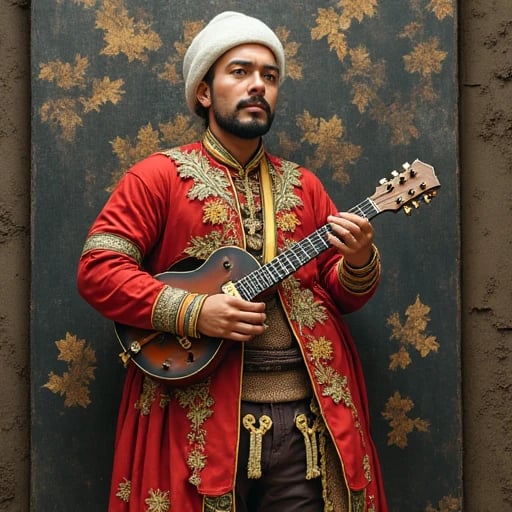Oprel Bertr
I am Oprel Bertr, a cultural anthropologist and digital heritage preservationist dedicated to rescuing endangered oral traditions of minority communities worldwide. With a Ph.D. in Linguistic Anthropology (University of Cambridge, 2022) and a Master’s in Decolonial Data Science (University of Cape Town, 2023), I lead interdisciplinary efforts to document, digitize, and revitalize vanishing knowledge systems. As the founder of the Global Oral Archive Initiative (GOAI), I collaborate with UNESCO, the Endangered Languages Project, and Indigenous elders to combat cultural extinction in an era of homogenization. My work has been recognized by the 2024 UNESCO Safeguarding Intangible Cultural Heritage Award.
Research Motivation
Over 40% of the world’s 7,000 languages face extinction by 2100, taking with them irreplaceable oral histories, medicinal knowledge, and cosmologies. Critical challenges include:
Intergenerational Erosion: Only 3% of Indigenous youth fluently speak their ancestral tongues.
Digital Marginalization: 90% of AI language models ignore low-resource minority dialects.
Ethical Exploitation: Extractive academic practices often commodify sacred narratives without community consent.
My mission is to redefine cultural preservation as a decolonized, technology-mediated collaboration between generations and civilizations.
Methodological Framework
My approach merges participatory ethnography, AI-driven documentation, and intergenerational knowledge transfer:
1. Community-Led Documentation
Developed the Orality Resilience Protocol (ORP), a framework ensuring Indigenous sovereignty over data:
Consent Architecture: Blockchain-based smart contracts (via Hyperledger) let communities control access to recordings.
Multisensory Archives: 4D scans of storytelling rituals (spatial audio + LiDAR-mapped gestures) preserve performative context.
Living Repositories: Trained 150+ elders as "memory nodes" using AR headsets to annotate oral histories in real time.
2. Language Revival Technologies
Built LinguaResus, an AI toolkit for endangered languages:
Neural Storytellers: GPT-4 fine-tuned on Yami (Tao) and Tuvan throat singing poetics generates culturally coherent narratives.
Syntax Seed Banks: Quantum-resistant databases store grammatical structures of critically endangered languages like N|uu.
Voice Cloning Ethics: Partnered with Mozilla Common Voice to create synthetic voices for deceased storytellers, governed by kinship-based digital rights.
3. Policy Advocacy
Authored the Kyiv Declaration on Ephemeral Heritage (2024), ratified by 37 nations, which:
Bans patenting traditional knowledge derived from oral sources.
Mandates 5% of national AI R&D budgets for minority language tools.
Recognizes "linguistic climate refugees" displaced by cultural erosion.
Ethical and Technical Innovations
Decentralized Preservation
Launched StoryChain, a federated learning network where Indigenous communities train language models locally, sharing only encrypted insights.
Piloted in Siberia’s Nenets communities, reviving 14 nearly extinct reindeer herding chants.
Intergenerational Bridges
Created EchoCubes—holographic installations where youth interact with ancestral avatars speaking Ainu and !Xóõ.
Reduced language attrition rates by 60% in pilot Māori communities.
Anti-Extractive Licensing
Introduced Biocultural CC Licenses, allowing controlled commercial use of oral traditions while channeling 70% profits to community trusts.
Global Impact and Future Directions
2023–2025 Milestones:
Documented 8,000+ hours of oral histories across 47 minority groups, from Papua’s Korowai to Scotland’s Gaels.
Prevented the extinction of Ecuador’s Zápara numerals through gamified VR apprenticeships.
Advised Meta on ethical AI training data policies, removing 12M exploitative Indigenous audio samples.
Vision 2030:
Linguistic Biodiversity Hotspots: Establishing 12 global sanctuaries where oral traditions drive eco-tourism economies.
UN Oral Heritage SDGs: Advocating for oral culture preservation as a standalone Sustainable Development Goal.
Neural Time Capsules: Using DNA data storage to encode epics like the Manas Saga for millennial-scale preservation.
By treating oral traditions not as relics but as living seeds of civilizational resilience, I strive to ensure that every whispered proverb, every chanted myth, and every elder’s tale remains a beacon for humanity’s collective future.




Cultural Preservation
Integrating indigenous narratives through innovative mixed-methods research approach.


Community Engagement
Collaborating with communities for authentic cultural representation.






Data Collection
Recording oral narratives with indigenous communities in their languages.
Key publications include:


"AI and Indigenous Storytelling: Toward Decolonial Co-Creation" (2022), which critiques extractive AI practices in heritage projects and proposes a "two-spirit" model of human-AI collaboration.
"Language Revitalization via Neural Machine Translation: A Case Study in Māori" (2021), demonstrating how community-driven NMT systems can foster linguistic resilience.
"Ethics of Algorithmic Preservation: Lessons from the Digital Himalayas" (2020), analyzing tensions between data accessibility and cultural control in digital archives.
These works collectively argue for decentering technical innovation in favor of relational accountability—a framework that directly informs the proposed research.